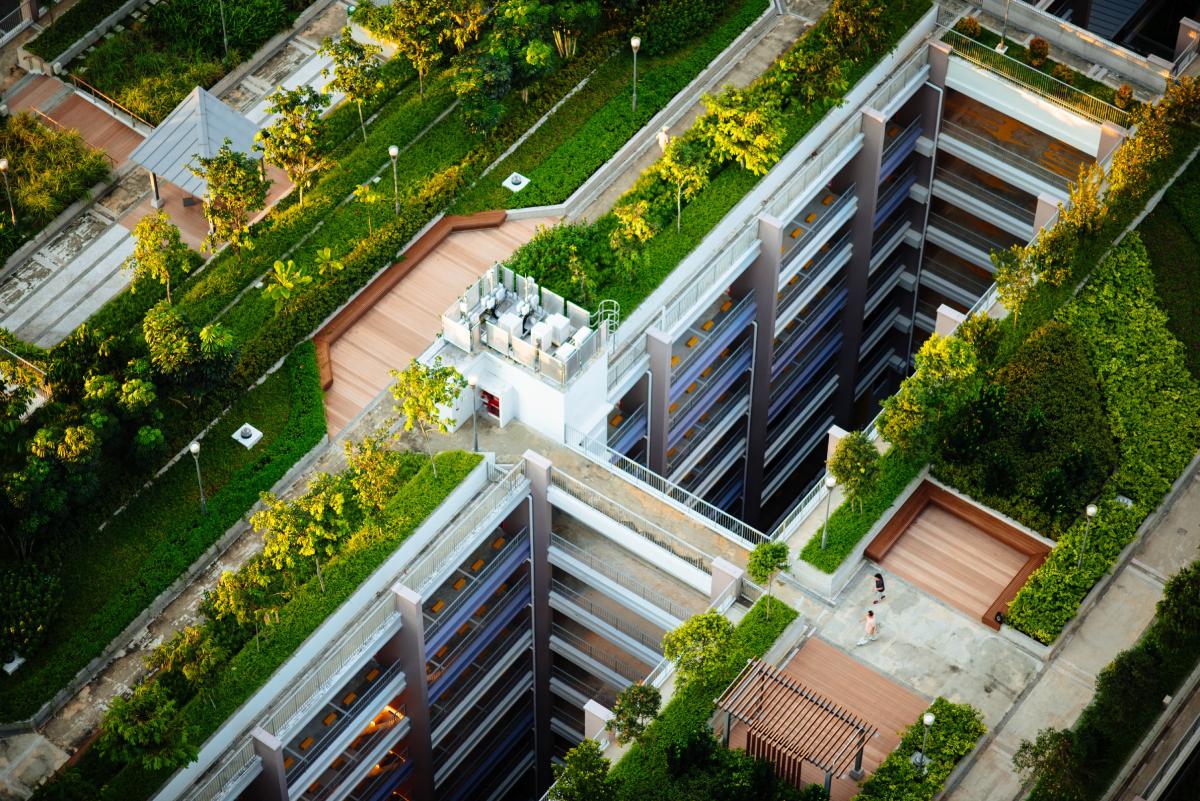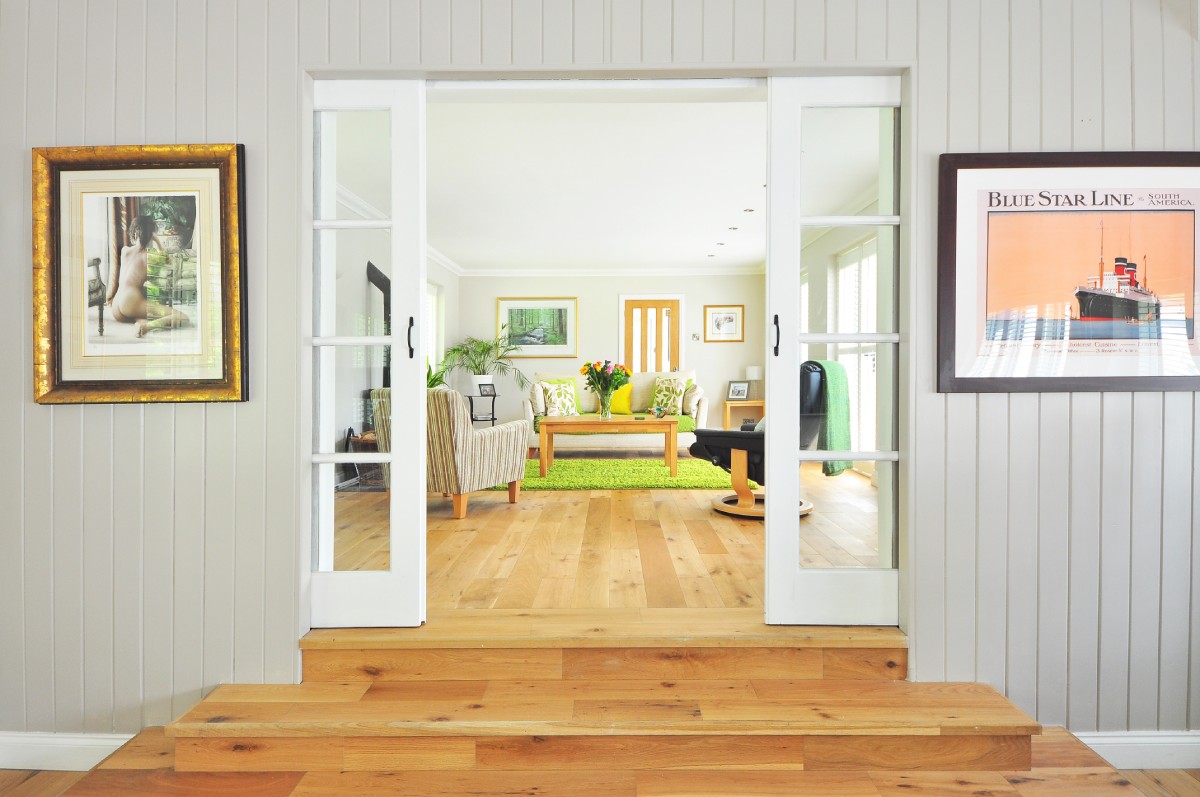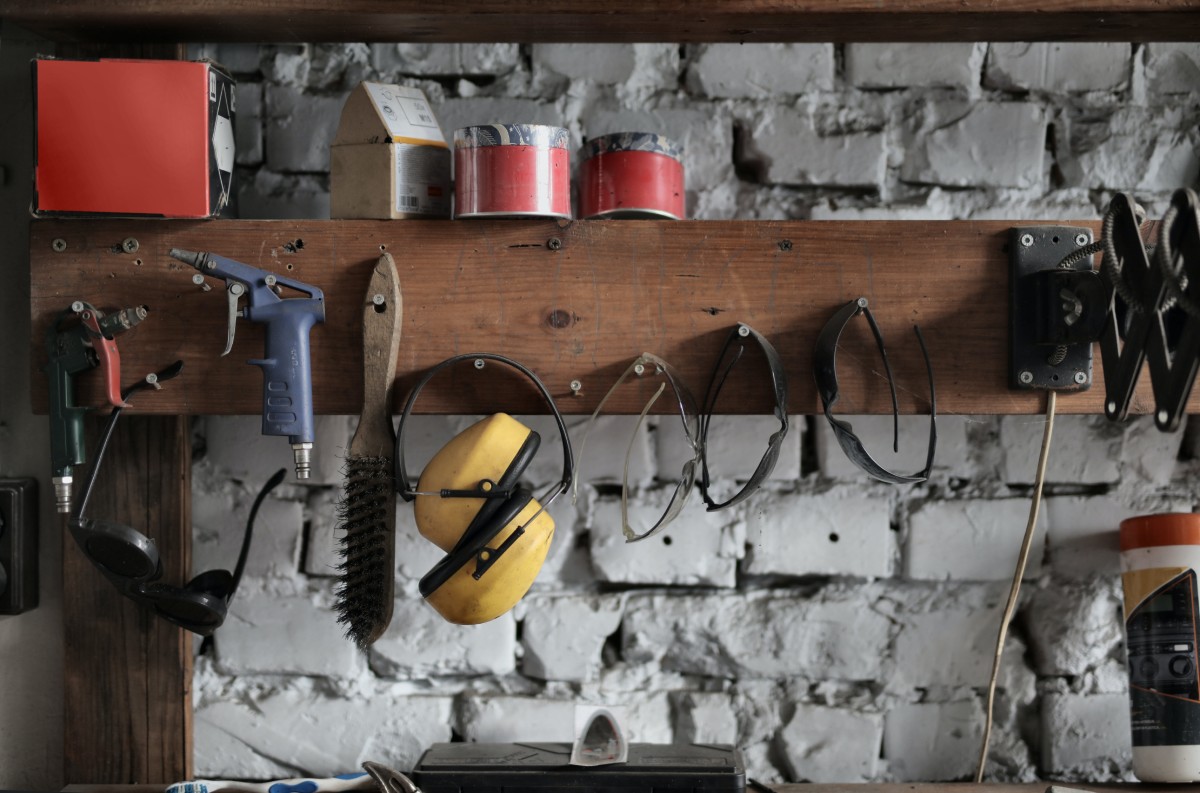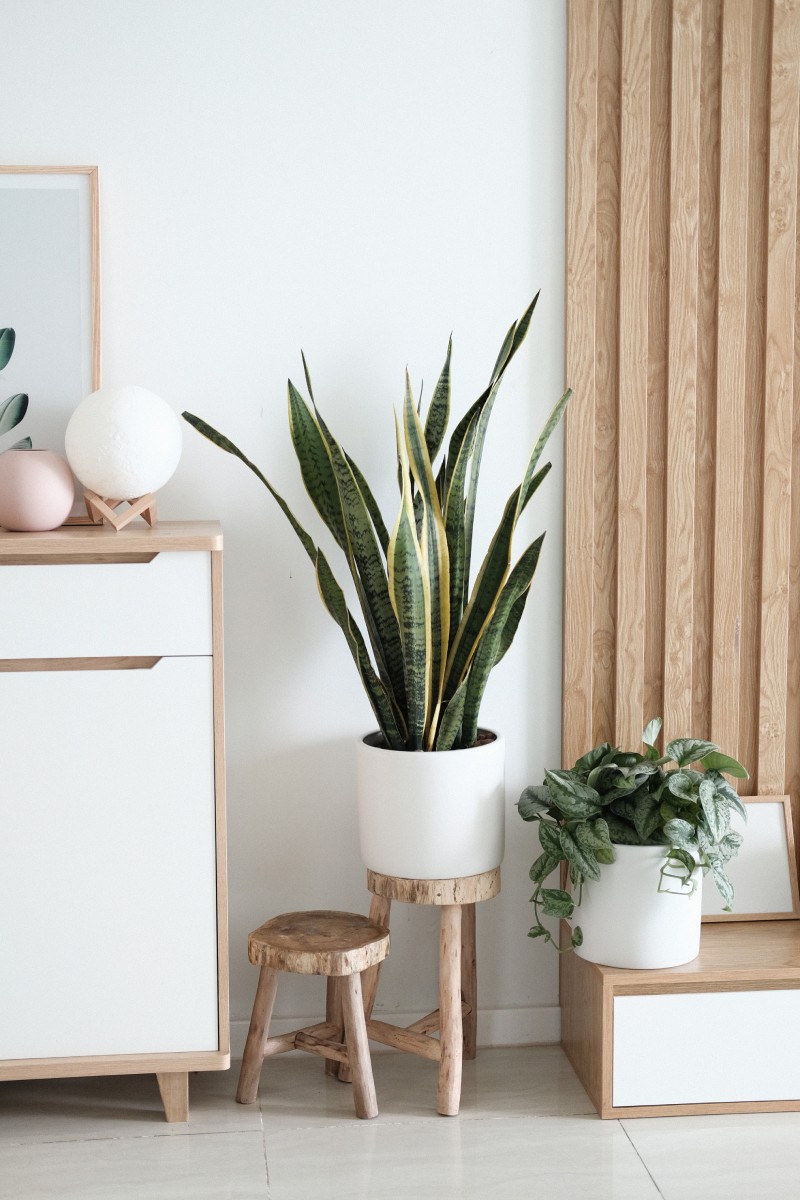Introduction
Green roofing, or vegetative roofing, is a sustainable and eco-friendly roofing solution that involves cultivating plants on the rooftop of buildings. This innovative practice has gained significant popularity recently due to its numerous environmental and economic benefits. By incorporating living vegetation into urban landscapes, green roofing goes beyond traditional roofing functions to offer a range of advantages, including enhanced energy efficiency and increased biodiversity.
Brief Explanation of Green Roofing
Green roofing involves installing a layered system on the rooftop designed to support plant growth. There are primarily three green roofing systems: intensive, extensive, and semi-intensive. Intensive green roofs have a thicker substrate layer, allowing for the development of diverse plant species, including trees and shrubs. On the other hand, extensive green roofs have a shallower substrate and support low-growing vegetation like grasses, herbs, and succulents. Semi-intensive green roofs strike a balance between the two, offering a wider variety of plant options than extensive roofs but with less maintenance than intensive ones.
The green roofing system typically consists of several vital components. These include a waterproof membrane to protect the building from water ingress, a root barrier to prevent the plants from damaging the roof structure, a drainage layer to manage excess water, a lightweight growing medium for the plants to thrive, and finally, the vegetation layer. This system works harmoniously to provide an effective and sustainable green roofing solution.
Importance of Energy Efficiency and Biodiversity in Buildings
Energy efficiency is a critical consideration for modern buildings. With the rising global temperatures and the increasing demand for cooling and heating, buildings contribute significantly to energy consumption. Green roofing offers a natural way to combat this issue. The vegetation on green roofs acts as an insulating layer, reducing heat absorption by the building during hot weather and preventing heat loss during colder periods. As a result, buildings with green roofs experience a reduced need for air conditioning and heating, leading to lower energy consumption and decreased greenhouse gas emissions.
Beyond energy efficiency, enhancing biodiversity in urban environments is of utmost importance. Urbanization often leads to the loss of natural habitats, affecting various plant and animal species. Green roofing provides an opportunity to create new ecosystems in densely populated areas. By supporting the growth of plants on rooftops, green roofs attract birds, butterflies, bees, and other beneficial insects. This wildlife influx helps restore biodiversity and foster ecological balance in urban settings.
In summary, green roofing presents a compelling solution to address environmental and architectural challenges. Its ability to improve energy efficiency and promote biodiversity demonstrates the immense potential of incorporating nature into the built environment. As we delve deeper into the benefits of green roofing, we will uncover the remarkable positive impact it can have on our planet and the well-being of communities worldwide.
Energy Efficiency Benefits of Green Roofing
Green roofing offers a range of energy efficiency benefits that contribute to a more sustainable and cost-effective built environment. Green roofs play a crucial role in enhancing energy efficiency in buildings by mitigating the heat island effect, improving insulation and thermal performance, and reducing energy consumption.
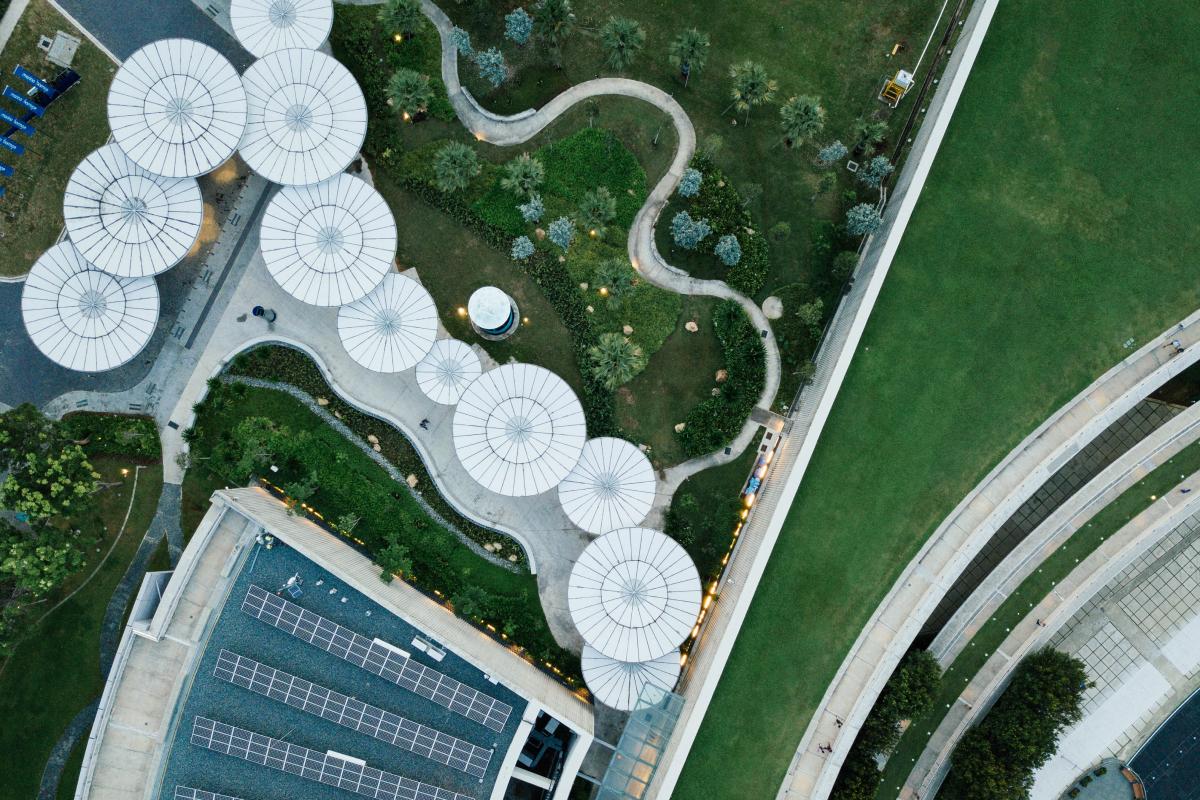
Reduction of Heat Island Effect
Urban areas are notorious for the heat island effect, where built-up surfaces such as roads, pavements, and rooftops absorb and retain heat, leading to higher local temperatures. Green roofing helps counteract this effect by providing a natural cooling mechanism. The vegetation and soil on green roofs absorb solar radiation, reducing the amount of heat transferred into the building. The plants also release moisture through evapotranspiration, further cooling the surrounding air. As a result, buildings with green roofs experience significantly lower surface temperatures, minimizing the urban heat island effect and creating a more comfortable living environment.
Improved Insulation and Thermal Performance
Living vegetation on green roofs contributes to improved insulation and thermal performance of buildings. The vegetation layer is an additional insulation barrier, reducing heat transfer through the roof. It helps to keep the building cool in hot weather and retains warmth during colder seasons. Combining the growing medium and plants provides a buffer that helps regulate indoor temperatures, reducing the need for excessive heating or cooling. This natural insulation effect can lead to a more consistent and comfortable indoor climate while reducing the reliance on mechanical heating and cooling systems.
Lower Energy Consumption and Cost Savings
One of the most significant benefits of green roofing is its potential to lower energy consumption and cost savings. With improved insulation and reduced heat absorption, buildings with green roofs experience reduced energy demand for cooling during hot summers. The decreased reliance on air conditioning systems translates into lower electricity usage and reduced energy bills. Similarly, in colder climates, the insulation provided by green roofs helps retain heat, resulting in decreased heating requirements and cost savings. Over time, these energy savings can add up significantly, benefiting both the environment and building owners’ budgets.
In addition to direct energy savings, green roofing contributes to the overall energy efficiency of buildings by reducing the load on HVAC systems. Less reliance on mechanical heating and cooling reduces the demand for energy-intensive equipment, leading to a more sustainable and efficient building operation.
In conclusion, green roofing offers substantial energy efficiency benefits for buildings. By mitigating the heat island effect, improving insulation and thermal performance, and reducing energy consumption; green roofs play a vital role in creating more sustainable and environmentally friendly built environments. The incorporation of green roofs in urban landscape is an effective strategy to enhance energy efficiency, reduce greenhouse gas emissions, and promote a greener future.
Environmental Benefits of Green Roofing
Green roofing enhances energy efficiency and provides numerous environmental benefits that contribute to a healthier and more sustainable ecosystem. Green roofs play a crucial role in creating a greener and more resilient environment by improving air quality, reducing stormwater runoff, and mitigating greenhouse gas emissions.
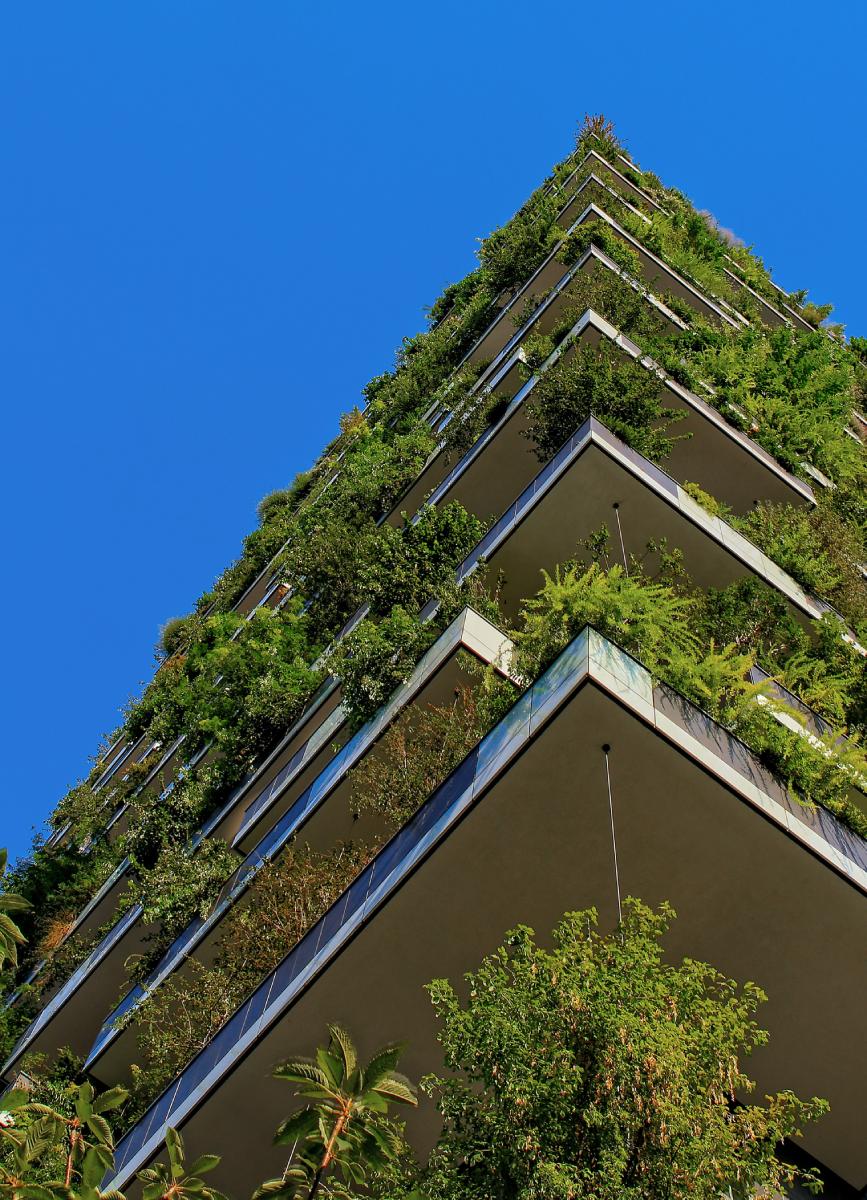
Enhanced Air Quality
Green roofs help improve air quality by acting as natural air filters. The vegetation on green roofs absorbs airborne pollutants such as carbon dioxide, nitrogen dioxide, and particulate matter. Through photosynthesis, plants convert carbon dioxide into oxygen, releasing fresh oxygen into the atmosphere. The presence of vegetation on rooftops helps reduce the concentration of pollutants in the surrounding air, leading to cleaner and healthier urban environments. By mitigating air pollution, green roofs contribute to residents’ overall well-being and respiratory health.
Reduction of Stormwater Runoff
One of the significant environmental benefits of green roofing is its ability to reduce stormwater runoff. In urban areas, impervious surfaces such as concrete and asphalt prevent rainwater from being absorbed into the ground. As a result, excess stormwater flows over these surfaces, picking up pollutants and overwhelming drainage systems, leading to urban flooding and water pollution.
Green roofs act as natural sponges, absorbing rainwater and reducing runoff volume. The vegetation layer and the soil substrate on green roofs retain a significant amount of water, allowing it to be slowly released back into the atmosphere through evapotranspiration or absorbed by the plants. This natural water retention mechanism helps alleviate the burden on stormwater management systems and reduces the risk of urban flooding. By reducing stormwater runoff, green roofs also play a role in preserving the quality of nearby water bodies, as they prevent the transport of pollutants into rivers, lakes, and streams.
Mitigation of Greenhouse Gas Emissions
Green roofs contribute to mitigating greenhouse gas emissions, particularly carbon dioxide (CO2), one of the primary contributors to climate change. Through photosynthesis, plants on green roofs absorb CO2 from the atmosphere and store it in their biomass. By sequestering carbon, green roofs act as carbon sinks, helping to offset the emissions produced by human activities. Reducing energy consumption associated with green roofing also indirectly lowers greenhouse gas emissions. As buildings with green roofs require less energy for cooling and heating, the reliance on fossil fuel-based energy sources is reduced, leading to decreased CO2 emissions.
In conclusion, green roofing provides significant environmental benefits by enhancing air quality, reducing stormwater runoff, and mitigating greenhouse gas emissions. By acting as natural air filters, green roofs contribute to cleaner and healthier urban environments. The ability of green roofs to retain rainwater helps prevent urban flooding and reduces water pollution. Moreover, the carbon sequestration potential of green roofs and their role in reducing energy consumption contribute to the overall efforts in combating climate change. Incorporating green roofs into building designs is a sustainable and impactful way to create more environmentally friendly and resilient cities.
Biodiversity Benefits of Green Roofing
Green roofing enhances energy efficiency and plays a vital role in supporting biodiversity in urban environments. By creating habitats for plants and wildlife, supporting pollinators and beneficial insects, and contributing to urban green spaces and ecological connectivity, green roofs contribute to preserving and promoting biodiversity.
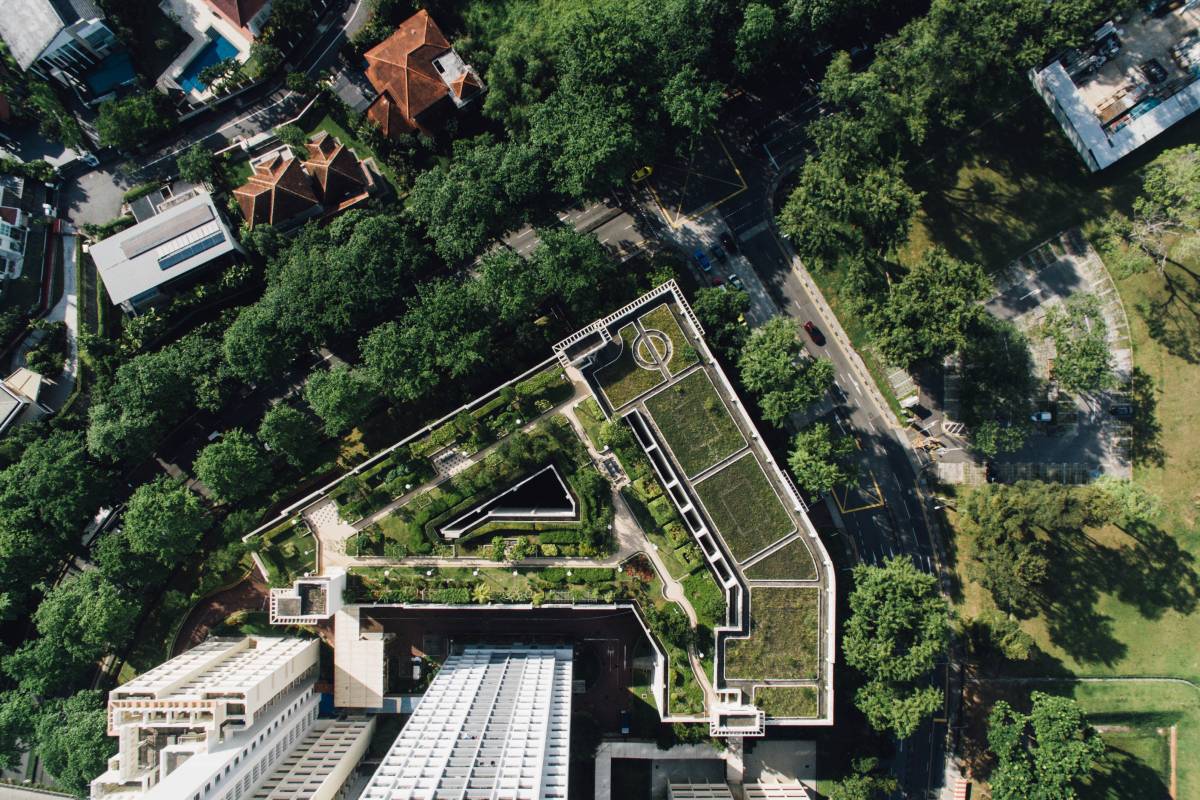
Creation of Habitat for Plants and Wildlife
Green roofs allow additional habitats for a diverse range of plant species and wildlife in urban areas. The vegetation layer on green roofs offers refuge and food sources for various plant species, including grasses, shrubs, and even trees. These green spaces on rooftops attract and support a variety of wildlife, such as birds, butterflies, bees, and other insects. By providing suitable habitats, green roofs help to offset the loss of natural habitats due to urbanization and provide corridors for wildlife movement in built-up areas.
Support for Pollinators and Beneficial Insects
Green roofs contribute to the conservation of pollinators and beneficial insects, which play a crucial role in pollinating plants and maintaining ecological balance. Flowering plants on green roofs attract bees, butterflies, and other pollinators, providing them with a vital food source and habitat. The availability of nectar and pollen-rich flowers on green roofs supports the survival and reproduction of these important insect species. By supporting pollinators and beneficial insects, green roofs contribute to the sustainability of urban ecosystems and promote the growth of surrounding vegetation.
Contribution to Urban Green Spaces and Ecological Connectivity
In densely populated urban areas, green spaces are often limited. Green roofs offer an opportunity to introduce greenery into the built environment and contribute to creating urban green spaces. They serve as miniature ecosystems that can support a diverse range of plant species, enhancing the aesthetic appeal of buildings and providing visual relief in urban landscapes. Moreover, green roofs contribute to ecological connectivity by creating stepping stones for wildlife movement in urban areas. They help connect fragmented habitats and promote the exchange of genetic material between plant and animal populations. This ecological connectivity is essential for maintaining healthy and resilient ecosystems in urban environments.
In conclusion, green roofing provides significant biodiversity benefits by creating habitats for plants and wildlife, supporting pollinators and beneficial insects, and contributing to urban green spaces and ecological connectivity. Green roofs serve as valuable refuges for various plant species and attract diverse wildlife, helping to offset the loss of natural habitats in urban areas. They support pollinators and beneficial insects, contributing to the sustainability of urban ecosystems. Furthermore, green roofs enhance urban green spaces and facilitate ecological connectivity, promoting the overall health and resilience of urban environments. Incorporating green roofs into building designs effectively enhances biodiversity and creates more sustainable and livable cities.
Economic Benefits of Green Roofing
Green roofing offers several economic advantages in addition to its energy efficiency and biodiversity benefits. By incorporating green roofs into buildings, property owners can experience an increase in property value, an extension of the roof’s lifespan, and a reduction in HVAC equipment maintenance costs.
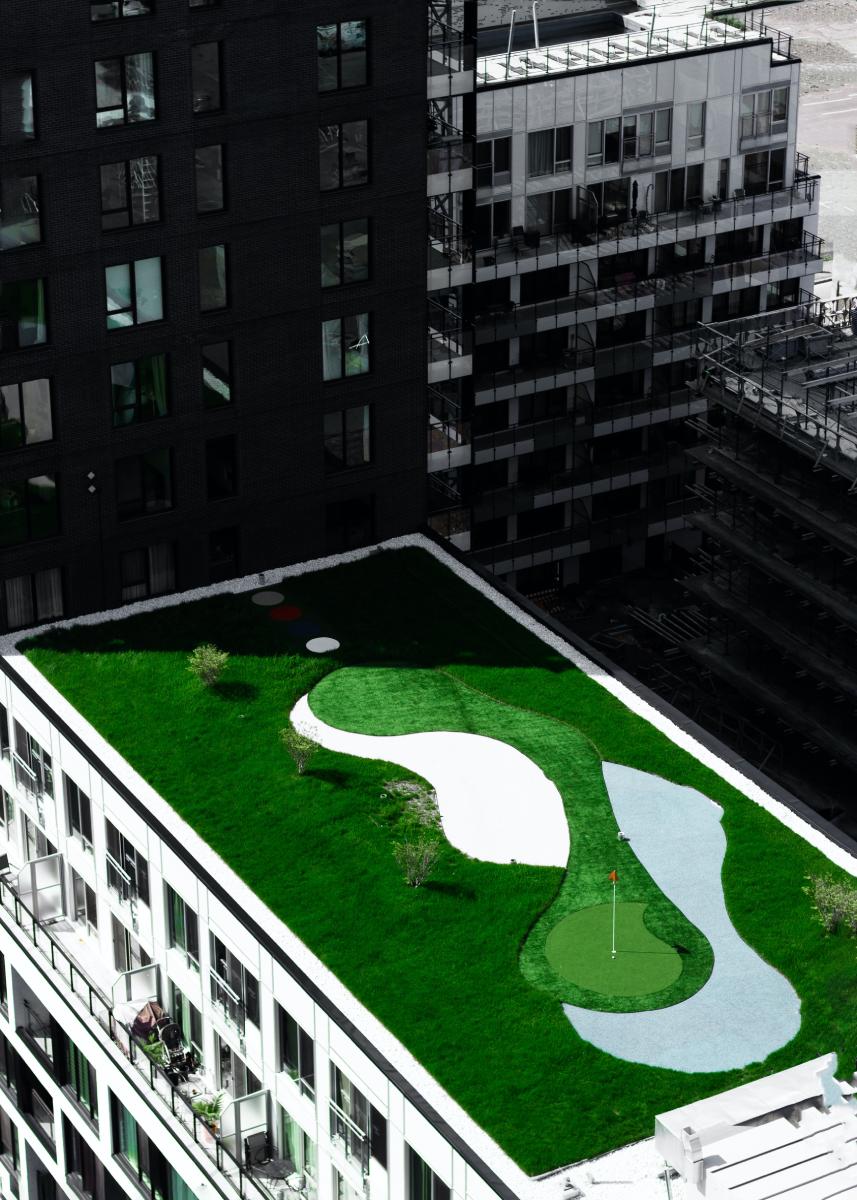
Increase in Property Value
One of the significant economic benefits of green roofing is the potential increase in property value. Green roofs enhance buildings’ visual appeal and functionality, making them more attractive to potential buyers or tenants. Green space on the roof adds a unique and desirable feature to the property. Studies have shown that properties with green roofs tend to have higher market values compared to similar properties without green roofs. The aesthetic appeal, energy efficiency, and environmental benefits associated with green roofing contribute to the overall desirability and value of the property.
Extension of Roof Lifespan
Green roofs provide an added layer of protection to the underlying roof membrane, extending its lifespan. The vegetation, growing medium, and additional insulation of green roofs act as a barrier against UV radiation, extreme temperature fluctuations, and other weathering elements. These protective features reduce the wear and tear on the roof membrane, resulting in fewer repairs and a longer lifespan. Green roofs help property owners save on replacement and maintenance costs over time by prolonging the roof’s durability.
Reduction of HVAC Equipment Maintenance Costs
The presence of green roofs can lead to a reduction in HVAC (Heating, Ventilation, and Air Conditioning) equipment maintenance costs. Green roofs act as a natural insulating layer, improving the thermal performance of buildings. The insulation provided by the vegetation and growing medium helps regulate indoor temperatures, reducing the workload on HVAC systems. As a result, HVAC equipment experiences less strain and requires less frequent maintenance. Property owners can benefit from cost savings in terms of repairs, servicing, and energy consumption associated with HVAC systems.
In summary, green roofing offers significant economic benefits to property owners. By incorporating green roofs, property values can increase due to their aesthetic appeal and desirable environmental features. Green roofs also extend the roof’s lifespan by providing an additional protective layer, reducing the need for costly repairs and replacements. Additionally, the insulation properties of green roofs lead to reduced HVAC equipment maintenance costs, resulting in long-term savings. Considering these economic advantages, green roofing proves to be a wise investment for property owners, providing both environmental and financial benefits.
Health and Well-being Benefits of Green Roofing
Green roofing contributes to energy efficiency, biodiversity, and economic advantages and provides numerous health and well-being benefits. Green roofs in urban environments offer noise reduction, improved acoustics, stress reduction, mental health benefits, and the creation of green spaces for recreation and relaxation.
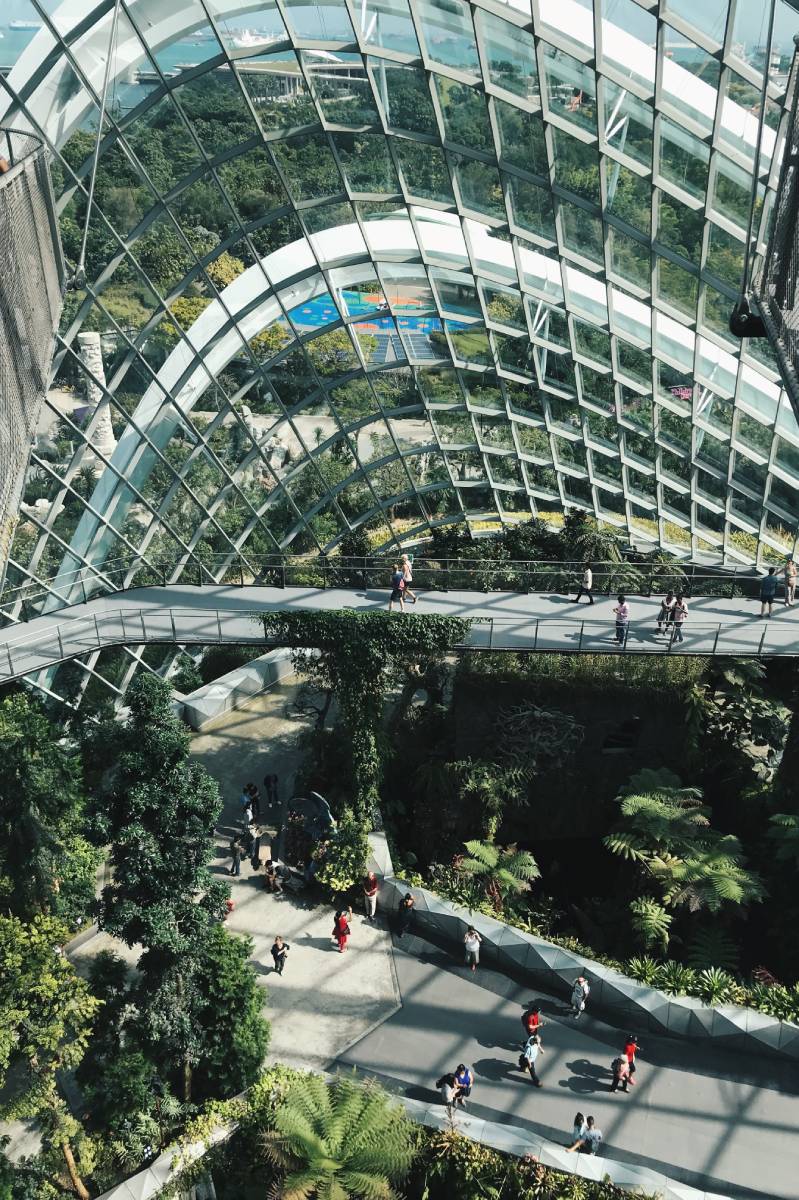
Noise Reduction and Improved Acoustics
One of the notable benefits of green roofing is its ability to reduce noise levels and improve acoustics. The vegetation, growing medium, and additional layers of green roofs act as sound insulators, absorbing and blocking external noise. This is especially beneficial in urban areas where noise pollution from traffic, construction, and other sources can be significant. By reducing noise infiltration, green roofs create a more peaceful and tranquil environment inside and outside the building. This can lead to improved quality of life for occupants, better sleep, and increased productivity in work environments.
Stress Reduction and Mental Health Benefits
Green roofs have been found to positively impact stress reduction and mental well-being. The presence of green spaces and natural elements has a calming effect on individuals, helping to reduce stress levels and improve mental health. Spending time in environments with vegetation has been associated with reduced anxiety, improved mood, and increased relaxation. Green roofs provide a unique opportunity for individuals to connect with nature, even in densely populated urban areas. The visual appeal and access to rooftop green spaces can enhance overall well-being and contribute to a healthier living and working environment.
Creation of Green Spaces for Recreation and Relaxation
Green roofs offer the creation of additional green spaces that can be used for recreation and relaxation. These elevated gardens provide opportunities for occupants to engage in outdoor activities, such as walking, gardening, or simply enjoying the natural surroundings. The availability of green spaces on rooftops encourages physical activity, which promotes a healthier lifestyle. In urban environments with limited access to traditional parks and green areas, green roofs are valuable alternatives that foster a connection with nature. They provide opportunities for social interaction, community engagement, and a sense of belonging.
In conclusion, green roofing offers significant health and well-being benefits to individuals in urban settings. The noise reduction and improved acoustics of green roofs create a more peaceful and comfortable living and working environment. Green spaces contribute to stress reduction, improved mental health, and overall well-being. Moreover, creating green spaces on rooftops offers opportunities for recreation and relaxation, promoting physical activity and social engagement. By integrating green roofs into buildings, we can enhance the health and well-being of individuals, creating greener, healthier, and more vibrant urban environments.
Types of Green Roofing Systems
There are several green roofing systems, each offering unique characteristics and suitability for different applications. These systems include intensive green roofs, extensive green roofs, and semi-intensive green roofs. Let’s explore each type in detail.
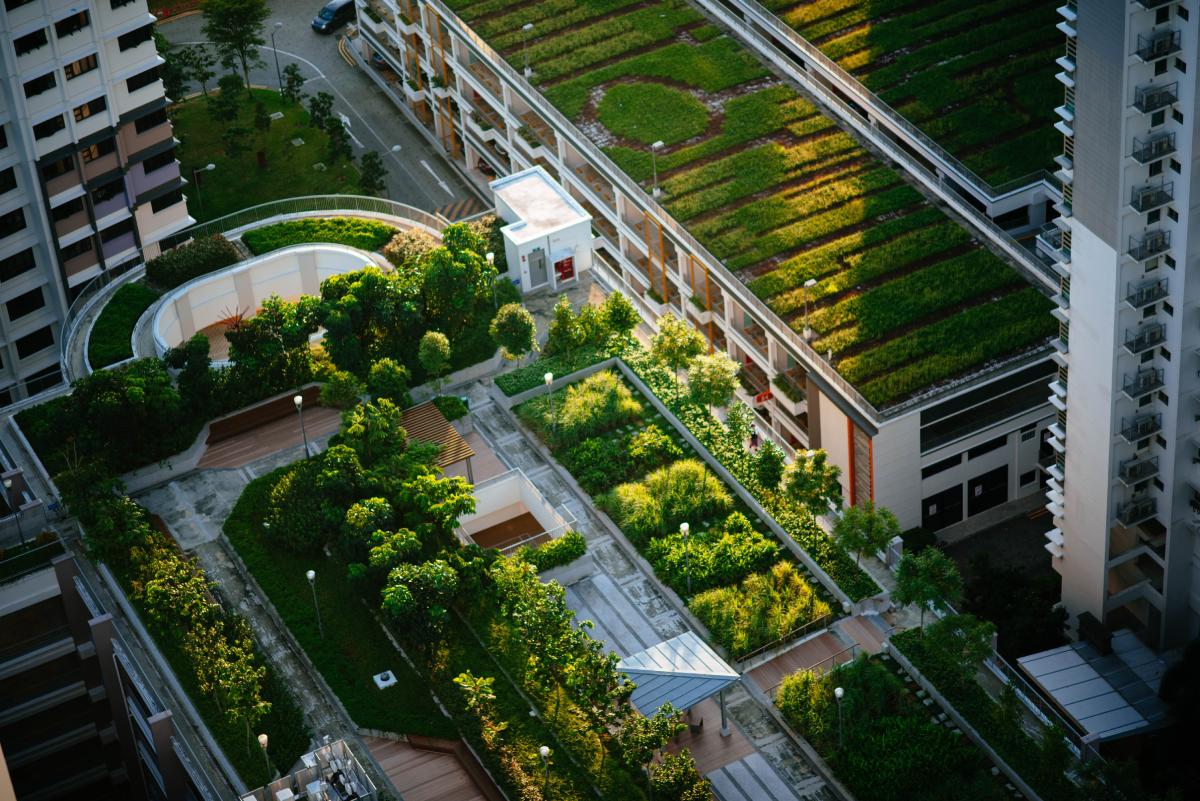
Intensive Green Roofs
Intensive green roofs, also known as “roof gardens” or “landscaped roofs,” are characterized by their deep growing medium and diverse vegetation. These roofs mimic traditional gardens and can support various plant varieties, including trees, shrubs, perennials, and even small-scale crops. Intensive green roofs typically require a thicker structure to accommodate the weight of the soil and vegetation.
The benefits of intensive green roofs extend beyond energy efficiency and biodiversity. They provide additional space for recreational activities, gardening, and social gatherings. Intensive green roofs can be designed with pathways, seating areas, and even water features, creating inviting outdoor environments for building occupants. These roofs require regular maintenance, irrigation, and access for upkeep. They can be more complex and costly to install compared to other green roofing systems.
Extensive Green Roofs
Extensive green roofs, also known as “eco-roofs” or “low-maintenance roofs,” are designed with a shallow layer of lightweight growing medium and are typically planted with hardy, drought-tolerant vegetation. Once established, these roofs require minimal maintenance and can thrive with little to no irrigation. Extensive green roofs are well-suited for buildings where weight limitations or cost considerations are factors.
While the plant diversity on extensive green roofs may be lower compared to intensive green roofs, they still provide significant energy efficiency and biodiversity benefits. These roofs act as natural insulators, reducing heat transfer and lowering cooling and heating demands. The vegetation helps to absorb rainfall, reducing stormwater runoff and relieving strain on urban drainage systems. Extensive green roofs’ simplicity and low-maintenance requirements make them a popular choice for many buildings, including residential, commercial, and industrial structures.
Semi-Intensive Green Roofs
Semi-intensive green roofs combine elements of both intensive and extensive systems, offering a middle ground between the two. These roofs feature a moderate depth of growing medium and a mix of vegetation that includes a variety of plant types, such as grasses, perennials, and small shrubs. Semi-intensive green roofs balance the design versatility and higher maintenance needs of intensive green roofs and the lower maintenance and cost benefits of extensive green roofs.
Semi-intensive green roofs provide the advantages of increased biodiversity, aesthetic appeal, and some recreational opportunities while maintaining a more manageable level of maintenance. They offer a greater variety of plant options than extensive green roofs, allowing for a visually pleasing rooftop landscape without the intensive care requirements of an intensive green roof.
In conclusion, the choice of green roofing system depends on factors such as building structure, weight capacity, maintenance considerations, and design objectives. Intensive green roofs offer lush gardens and versatile outdoor spaces; extensive green roofs provide low-maintenance solutions with drought-tolerant vegetation and semi-intensive green roofs strike a balance between the two. Building owners can maximize the energy efficiency, biodiversity, and other benefits of green roofs by selecting the most appropriate green roofing system.
Considerations for Implementing Green Roofing
Implementing a green roofing system requires careful consideration and planning to ensure successful outcomes. Several factors should be considered to optimize the benefits of green roofs while addressing potential challenges. Let’s explore these considerations in more detail.
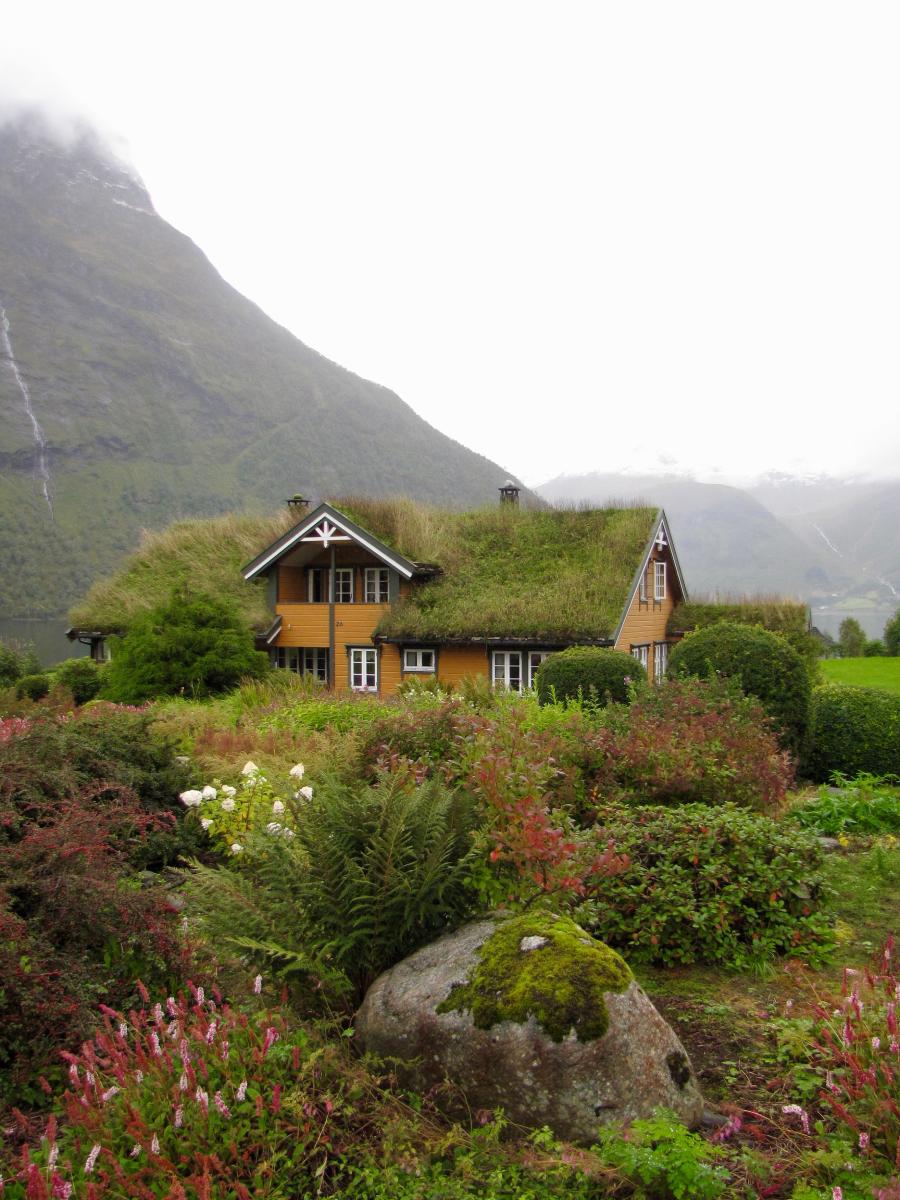
Structural Considerations and Weight Load
One of the primary considerations when implementing a green roofing system is the structural capacity of the building. Green roofs can add significant weight to the structure due to the soil, vegetation, and additional components such as irrigation systems. It is essential to assess the roof’s load-bearing capacity and ensure it can support the added weight.
Consulting with a structural engineer is crucial to evaluate the roof’s strength and determine if any reinforcements or modifications are necessary. By understanding the weight limitations of the building, appropriate design decisions can be made to ensure the safety and longevity of the green roof.
Plant Selection and Maintenance
Choosing the right plants for a green roofing system is essential for long-term success. Factors such as climate, sun exposure, and roof orientation should be considered when selecting vegetation. Drought-tolerant and low-maintenance plant species are often preferred for extensive and semi-intensive green roofs, as they can thrive with minimal irrigation and care.
Proper plant maintenance is crucial to keep the green roof healthy and vibrant. Regular monitoring, watering, pruning, and weed control are necessary tasks to ensure the plants’ well-being and prevent any issues such as overgrowth or pest infestation. It is essential to establish a maintenance plan and allocate resources for ongoing upkeep to maximize the longevity and effectiveness of the green roof.
Professional Installation and Expertise
Implementing a green roofing system is a complex task that requires professional expertise and experience. Engaging a specialized green roofing contractor or a team with relevant knowledge can significantly contribute to the project’s success. These professionals understand the technical aspects of green roof installation, including waterproofing, drainage systems, and plant selection.
Professional installers can also guide local regulations and building codes related to green roofs. Their expertise ensures that the installation process adheres to industry standards and best practices, reducing the risk of structural or functional issues in the future.
By working with experienced professionals, building owners can have confidence in the quality and durability of their green roofs. The expertise brought by these specialists ensures that the green roof is implemented correctly, maximizing its energy efficiency, biodiversity, and other benefits.
In conclusion, implementing a green roofing system requires careful consideration of structural capacity, plant selection, and professional expertise. By addressing these considerations, building owners can create sustainable and thriving green roofs that enhance energy efficiency, promote biodiversity, and contribute to a healthier environment.
Case Studies and Success Stories
Green roofing has gained popularity worldwide due to its numerous benefits and positive environmental and community impacts. Let’s explore some inspiring case studies and success stories that highlight the transformative power of green roofing projects.
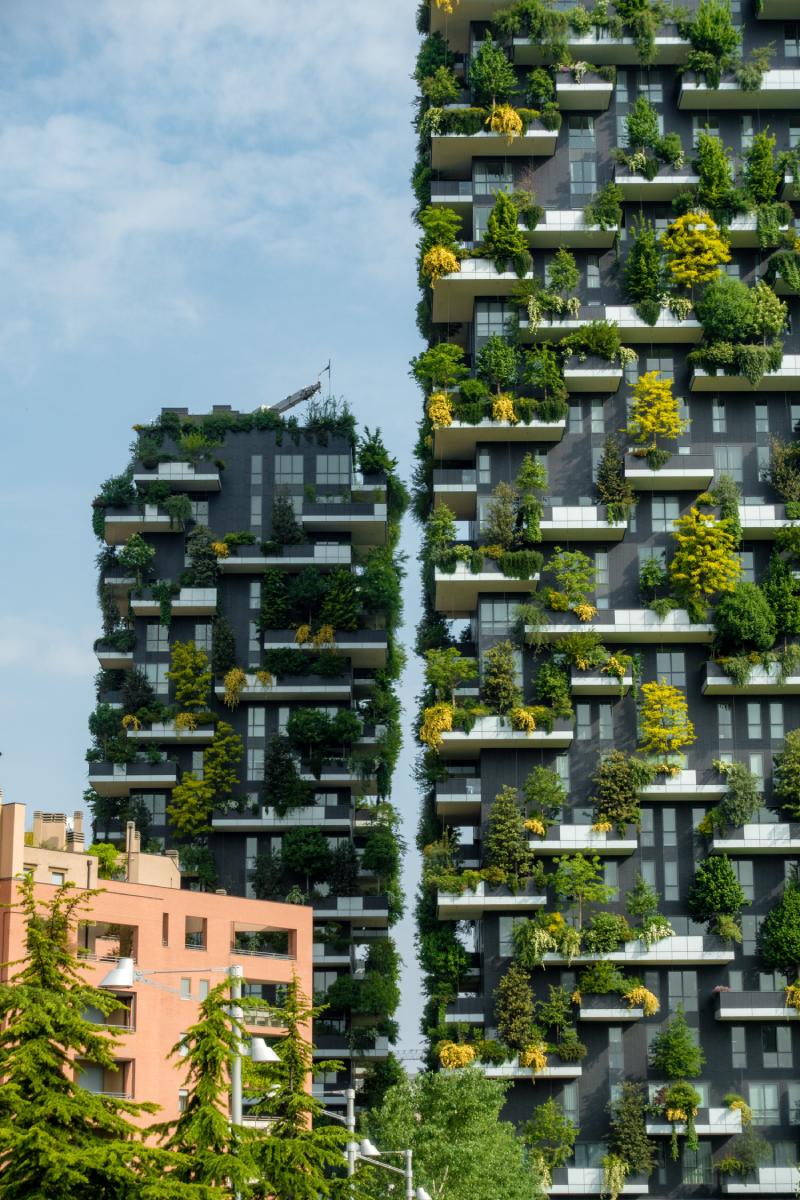
Highlighting Successful Green Roofing Projects
Chicago City Hall Green Roof
Chicago City Hall is renowned for its iconic green roof, one of the earliest and most significant green roof projects in the United States. The 20,000 square feet (1,900 square meters) rooftop garden enhances the building’s energy efficiency and serves as a vibrant urban oasis. It has become a symbol of sustainable design and a model for green roof implementation in cities worldwide.
Bosco Verticale, Milan
Bosco Verticale, meaning “Vertical Forest,” is a pair of residential towers in Milan, Italy, featuring extensive greenery on their facades and balconies. These buildings create an actual urban forest with over 900 trees and thousands of shrubs and plants. The vertical forests provide insulation, mitigate air pollution, and contribute to the area’s biodiversity while offering residents a unique living experience in harmony with nature.
The Solaire, New York City
The Solaire, located in Battery Park City, New York, is one of the first residential high-rise buildings in the United States to incorporate green roof technology. The extensive green roof covering 5,000 square feet (465 square meters) significantly reduces the building’s energy consumption by insulating the roof, reducing heat gain, and minimizing stormwater runoff. The Solaire is a prime example of how green roofs can be integrated into urban environments to enhance energy efficiency and sustainability.
Showcasing the Benefits and Outcomes
-
Energy Efficiency
Numerous studies have shown that green roofs can significantly reduce the energy consumption of buildings. For example, a study conducted in Toronto, Canada, found that green roofs can reduce the summer cooling demand of a building by up to 75%. Green roofs help regulate indoor temperatures, reduce reliance on air conditioning, and lower energy costs by insulating the roof and reducing heat transfer. -
Stormwater Management
Green roofs excel in managing stormwater runoff, which is a significant concern in urban areas. The vegetation and substrate of green roofs absorb and retain rainwater, reducing the volume and velocity of runoff. This helps alleviate strain on stormwater infrastructure and minimizes the risk of flooding and water pollution. In Seattle, the Bullitt Center, with its green roof, has successfully managed stormwater effectively, contributing to the overall sustainability of the building. -
Biodiversity Enhancement
Green roofs provide valuable habitats for plants, insects, and birds, supporting local biodiversity in urban areas. They create stepping stones for wildlife and contribute to the ecological connectivity of urban landscapes. Projects such as the Vancouver Convention Centre in Canada have documented increased bird and insect diversity on their green roofs, demonstrating how green roofs can foster urban wildlife habitats.
These case studies and success stories illustrate the real-world impact of green roofing. They demonstrate how green roofs enhance energy efficiency, improve stormwater management, support biodiversity, and create healthier and more sustainable urban environments. By learning from these examples, we can inspire and encourage more individuals, organizations, and cities to embrace green roofing as a transformative solution for a greener and more resilient future.
Conclusion
Green roofing presents a multitude of benefits that go beyond the traditional roof function. By recapping the advantages of green roofing, encouraging the adoption of sustainable practices, and emphasizing the positive impact on energy efficiency, biodiversity, and sustainability, we can pave the way for a greener future.
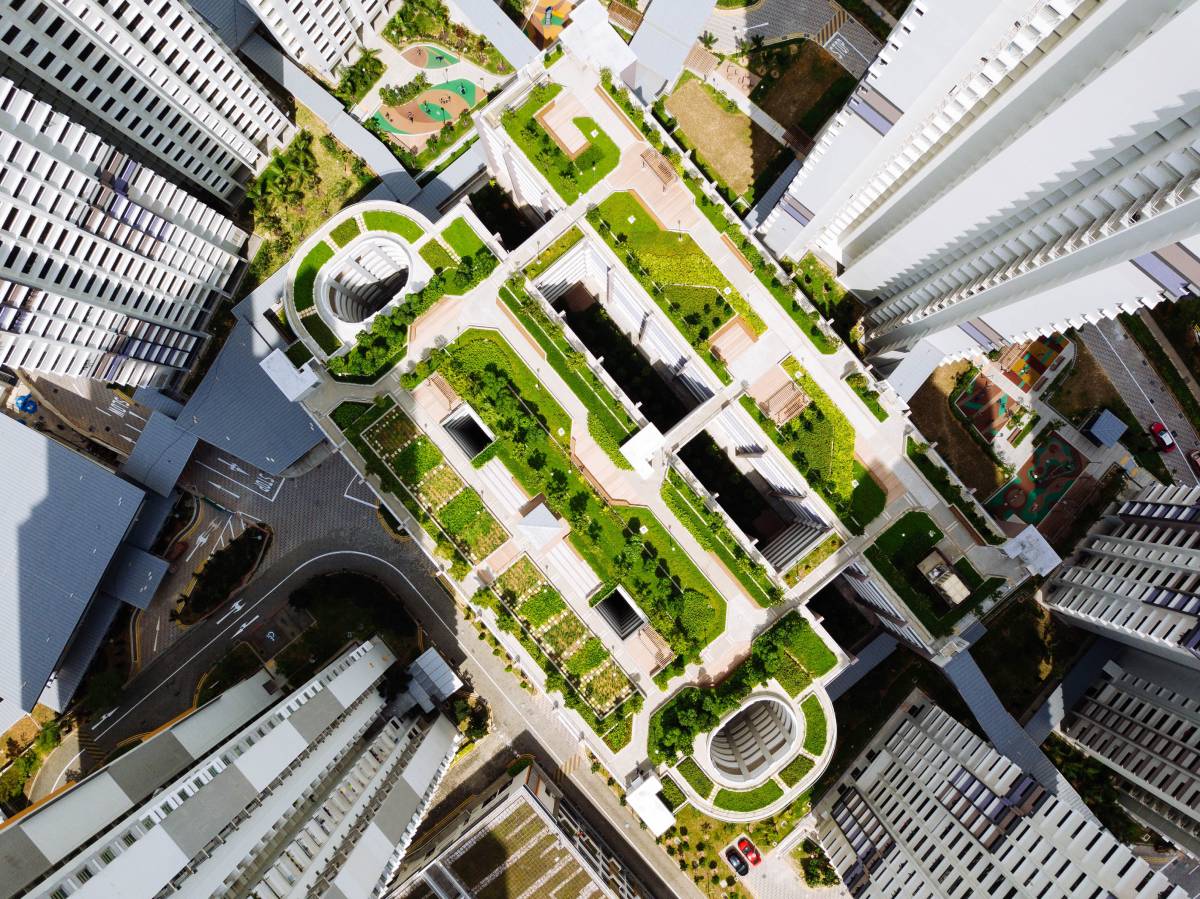
Recap of the Benefits of Green Roofing
Green roofing offers many benefits that extend to the environment, economy, and society. Firstly, in terms of energy efficiency, green roofs effectively reduce the heat island effect, improve insulation and thermal performance, and result in lower energy consumption and cost savings. Secondly, they provide environmental benefits by enhancing air quality, mitigating stormwater runoff, and contributing to the reduction of greenhouse gas emissions. Thirdly, green roofs support biodiversity by creating habitats for plants and wildlife, supporting pollinators and beneficial insects, and promoting urban green spaces and ecological connectivity. Additionally, they bring economic benefits through an increase in property value, extension of roof lifespan, and reduction of HVAC equipment maintenance costs. Lastly, green roofs contribute to the health and well-being of individuals by reducing noise, providing stress reduction and mental health benefits, and creating green spaces for recreation and relaxation.
Encouragement for Adopting Green Roofing Practices
In light of the numerous benefits, it is crucial to encourage the adoption of green roofing practices. Building owners, architects, and urban planners have the opportunity to make a significant positive impact on the environment and their communities. They can contribute to a more sustainable and resilient built environment by incorporating green roofs into their projects. Governments, municipalities, and policymakers play a vital role in creating incentives, regulations, and guidelines that promote the integration of green roofs in urban development. Additionally, education and awareness campaigns can empower individuals to make informed decisions and embrace the benefits of green roofing.
Emphasis on the Positive Impact on Energy Efficiency, Biodiversity, and Sustainability
Green roofing holds the key to enhancing energy efficiency, fostering biodiversity, and promoting sustainability. By reducing energy consumption, green roofs mitigate climate change, and lower greenhouse gas emissions. The creation of habitats for plants and wildlife supports biodiversity conservation and enhances the overall ecological health of urban areas. Moreover, green roofs contribute to the sustainability of cities by mitigating the urban heat island effect, managing stormwater runoff, improving air quality, and creating green spaces for communities to enjoy.
In conclusion, green roofing is not merely a trend but a crucial solution for enhancing energy efficiency, biodiversity, and sustainability in our built environment. By recognizing and harnessing the benefits of green roofs, we can create healthier, more resilient, and environmentally conscious cities. Let us embrace green roofing practices and work collectively towards a greener and brighter future for generations to come.

